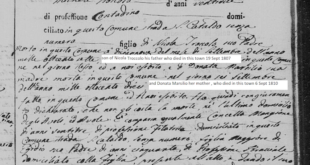I first journeyed to Matera, Italy, in 1985. It’s found in southern Italy in a once impoverished region of Basilicata. The city has been inhabited by man since the paleolithic era and is touted by some as the longest continually lived-in community on Earth. It’s extensive cave-like dwelling districts, the Sassi, are a marvel to behold. Witnessing Matera from across its massive ravine, one comes to appreciate why it’s been known as the underground city. It appears as it has since the time of Christ, so much so that Matera has frequently been used as the background for biblical films, including Mel Gibson’s “The Passion of the Christ.”
The city has had its ups and downs. Once the capital of Basilicata, it has been occupied and controlled by the Greeks, Turks, Romans, Germans and more. In 1806, the French designated Potenza as the capital of the region, and with that Matera began a downslide as funding and support dwindled. By the early 20th century, the city had become synonymous with poverty. Families back then were living together with their farm animals in unsanitary cave-houses. Carlo Levi’s book “Christ Stopped At Eboli” gave notice to the world of the inhuman living conditions of Matera. The pervasive squalor earned Matera the unenviable title “The Shame Of Italy.” In response, the residents of the Sassi were forced by law into modern housing on the plateau above in 1953. For decades afterward, the Sassi of Matera were abandoned.
I was initially drawn to Matera because it represented more than any location all the reasons why my family and those for generations before had left Italy to make a new home elsewhere. As though I were a child of Matera, the city represented the child in me that was filled with sorrow and shame. Like so many before us looking to escape disease and hunger, we too left Southern Italy for the promise of America. More important than the luggage filled with worthless items we scrounged together for the journey, my family carried with us hope. A hope that where my parents were taking us would afford us an opportunity to not only survive but also eventually thrive. Today I can proudly say that I’m prospering.
Today, Matera once again thrives. It’s a Phoenix risen from the ashes. In 1993, Matera was designated a UNESCO World Heritage Site. In the wake of that designation, the city worked diligently to preserve its history. Over the ensuing years, the Sassi have slowly been reclaimed and restored, with its cave-like dwellings converted to comfortable hotels, shops and restaurants. In 2018, The New York Times ranked Matera and Basilicata third on its list of “52 Places to Go.” This year, Matera was awarded the proud distinction of being Western Europe’s Cultural Capital. With that recognition, not only are the eyes of the world upon Matera but also its legs in the form of millions of tourists walking its ancient streets and pathways.
I’ve visited Matera often since that first encounter in 1985. It’s the one location on earth that my spirit most identifies with. I recall those powerful initial impressions of impoverishment, hardship and want. I’ve grown and changed as Matera has evolved and diversified. As I’ve found a new life in America, Matera has carved a new life as well. It’s no longer the shame of Italy but rather its pride. Likewise, I no longer am that child born of sorrow and shame. I proudly navigate the cobblestone walkways of Matera today as a child of its noble history. I’m an older adult now, not anywhere near as old as Matera, but I’d like to think the city and I share the comfort and satisfaction of a life well lived. I look forward to my next visit to that kindred spirit of a city.
The above appears in the November 2019 issue of the print version of Fra Noi. Our gorgeous, monthly magazine contains a veritable feast of news and views, profiles and features, entertainment and culture. To subscribe, click here.
 Fra Noi Embrace Your Inner Italian
Fra Noi Embrace Your Inner Italian







